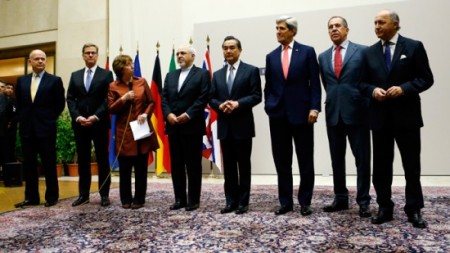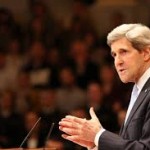
Historic Iran nuclear deal limited, but successful
By Joshua Kyle Miller
Early Sunday morning, an historic agreement was reached at a crucial juncture between the P5+1 countries and Iran. The foreign policy chief of the European Union, Catherine Ashton, and Iranian officials announced a landmark accord that would temporarily freeze Tehran’s nuclear program for six months and lay the groundwork for further negotiations.
What made the agreement truly historic was the fact that steps had been taken and agreed upon by both sides that stymied Iran’s ability to further develop its nuclear program and actually rolled some of its dynamics back in return for targeted sanctions relief.
The crucial points of the deal include:
- Iran would agree to stop enriching uranium beyond 5 percent and neutralize its stockpile of uranium enriched beyond this point.
- No new centrifuges, neither old models nor newer more efficient ones, could be installed.
- There will be no further development of the Arak plan which it is believed could produce plutonium.
- Iran will permit greater access to inspectors including daily access at the Natanz and Fordo nuclear sites.
- In return, the United States has agreed to provide $6 to $7 billion in sanctions relief.
Skeptics are quick to point out that the agreement leaves out a few points; for instance, the agreement would not require Iran to stop enriching uranium to a level of 3.5 percent or dismantle any of its existing centrifuges. As a result, it was agreed upon that Iran permit daily inspections at the Natanz and Fordo facilities to ensure Iran faithfully obliges to the agreement.
Critics at home and abroad criticize “gaps” in the interim agreement such as this one, but should understand the situation is not contingent upon the U.S. blindly trusting Iran. Secretary of State, John Kerry, indicated “you don’t have to trust the people you’re dealing with … you have to have a mechanism put in place whereby you know exactly what you’re getting and you know exactly what they’re doing.”
Heeding Secretary Kerry’s words, skeptics at home and allies overseas should temper their public opposition by abiding to the six-month time period that was agreed upon in the agreement before making any action.
One considerably positive outcome from the agreement that should be noted, is Iran’s “breakout capability” – the time Iran would need to produce weapons-grade uranium for a nuclear device – has been curbed further by at least a few weeks, according to nuclear experts. In fact, the interim agreement not only prolongs Iran’s “breakout capability”, but it also would provide additional warning if Iran violated its obligations and sought to attain a nuclear weapon.
At the conclusion of the talks on Sunday, both the Americans and the Iranians seem to have walked away from the agreement smiling. Both sides can say they have received concessions on key points, but the effects of these will be limited. The relief from sanctions has been narrow in scope and specific; the US highlights that existing sanctions will continue to be implemented. Iran to a large extent has ceased any further progress on its nuclear activities and will initiate the reversal of some elements of its program.
While this agreement is by no means an end-all be-all deal, the success of it is rooted in the fact that the ground has been laid for further substantive talks. As two former American national security advisers, Zbigniew Brzezinski and Brent Scowcroft, highlighted in their letter to key American lawmakers endorsing the administration’s approach, “the apparent commitment of the new government of Iran to reverse course on its nuclear activities needs to be tested to insure it cannot rapidly build a nuclear weapon.”
This interim agreement has been one significant step, highlighting Iran’s good intentions, among many to come that could eventually resolve the vexing issue of Iran’s nuclear program. Seeing whether the P5+1 and Iran can reach a comprehensive agreement to actually do so, will surely be the ultimate test.






